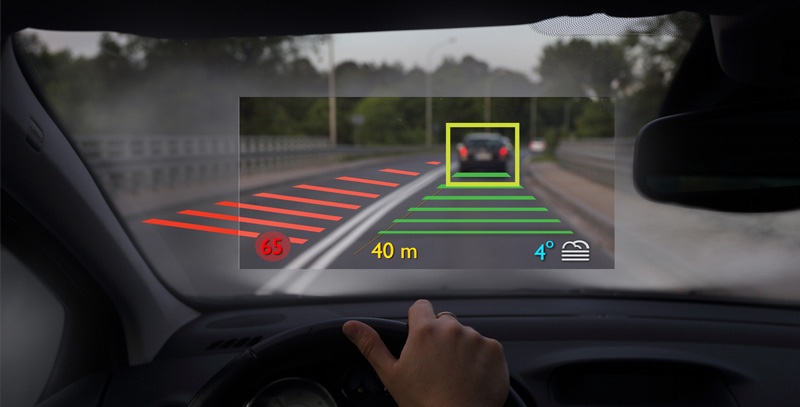Sometimes it feels like technology is advancing at the speed of light. In particular, Augmented Reality (AR) is one of those at the forefront. With AR tech in most smartphones, the number of AR units worldwide is more than three billion. By comparison, the number of VR units is only around 82 million.
Although AR is evolving rapidly, what we’re seeing now is only the tip of the iceberg. According to statista, the worldwide market size of AR and VR will be approx. 210 billion dollars in 2022 against 27 billion dollars in 2018. In addition, Digi-Capital predicts that the revenue from augmented reality will be four times that of virtual reality in 2020.
In this blog we focus on three industries we expect innovations in AR to make substantial waves in the coming years.
The Medical Industry: Transforming Training
You might not think of the medical industry as one of the driving forces behind augmented reality, but it is. Why? Because AR compose the perfect medical training and education.
With AR tools, surgeons will be able to train for rare and unexpected cases without the worry of making fatal errors. In this way, the tech can be used for teaching, practicing rare procedures, and even helping doctors advance their training beyond the classroom.
Augmented reality can also be used as an interactive education for students and experienced doctors alike in order to help them stay up-to-date. The technology allows doctors and surgeons to create, share, demonstrate, and actually consult with other medical professionals in real time.
AR even has the potential to help improve the accuracy and efficiency of medical systems around the world. If, for instance, surgeons were able to map a specific area of a patient, they could get a full 3D view of the patient’s body in real time, and programs could then be coded to help them detect and identify cancerous areas or tumors. In this respect, AR has the potential to save lives.
The Automobile Industry: Eyes On the Road
Some cars are already equipped with “head-up” displays (HUD) that shows directions, a car’s speed, and other information on the windshield ahead of the driver, but we’re expecting much more of this driver assistance system.
As the development of AR glasses gathers speed, it’s not unlikely that these will be used for driving as well. This will provide drivers with a 180 degree AR view and help with pedestrians and vehicles proximities. With these innovations, drivers will always have their eyes on the road - even when following directions. This means no more looking at your phone or GPS to see the next turn, no more checking the speed, and no more glancing at the radio to change station or choose your favorite song.
We believe that AR in cars will become standard equipment in the near future...along with driverless cars. According to Venture Beat, AR will play an important role in this context by helping drivers adjust to the new reality. If AR can help us trust technology, we’ll trust driverless cars in the transition from today’s cars to tomorrow’s intelligent car.

The Marketing Industry: Improving Consumer Experience
The third industry we expect to be revolutionized by augmented reality, is marketing. By using AR, marketers can create an interactive and much more engaging consumer experience. The use of AR in marketing is already so popular that its growth is expected to reach $117.4 billion by 2022. Not bad for a technology that people knew very little about five years ago.
With AR marketing, consumers can get an up close and personal experience of a product. There are several ways to do it:
A few years ago, the French company Lacoste launched an AR app that could be used in their stores. With the app, customers could try on shoes without actually trying them on. The clothing brand, Timberland, did something similar when they equipped stores with AR mirrors that let consumers try on clothes virtually.
AR marketing can be used to promote any products, including food. Today, many people have their grocery list on their cell when they go shopping, but soon they’ll probably use the phone more actively. By pointing the phone’s camera at a specific product, they’ll be able to see information such as price, offers, nutritional information, or maybe even recipes and related products. Take for instance coffee brands that sell both coffee and coffee machines. By adding AR to packaging, consumers will be able to “scan” the coffee and discover how to make the perfect drink on that particular brand’s coffee machine. This way, brands can promote several products simultaneously in an interactive and personal way.

AR and (Indoor) Navigation, A Match Made in Heaven
Suffering from a poor sense of direction? Don’t worry, with the rapid advances in AR, sense of orientation may just become an unnecessary gift in the near future. With both (indoor) navigation and AR on the rise, you don’t have to gaze into the crystal ball to know that these technologies will change the way we navigate.
At this year’s Google I/O, Google showed off their new augmented reality Street View mode. By combining their existing Street View and Maps data with the live feed from your phone, Google overlays walking directions to show you where to go. They’ve even added an animated character to lead the way.
But what about AR and indoor navigation? Surely, it’s coming and some venues already have indoor wayfinding with AR directions. However, building an augmented reality solution is not just something you do and certainly doesn’t come cheaply. To develop AR navigation, you need a team that includes an Android and an iOS developer, a developer specializing in Unity or Unreal Engine, a 3D artist and a UX Designer - five highly-skilled and generously paid professionals working on just one project.
AR is the perfect extension of indoor navigation and we’re expecting to see much more of it in the years to come.


.png?width=220&name=Google_Premier_Partner%20(1).png)